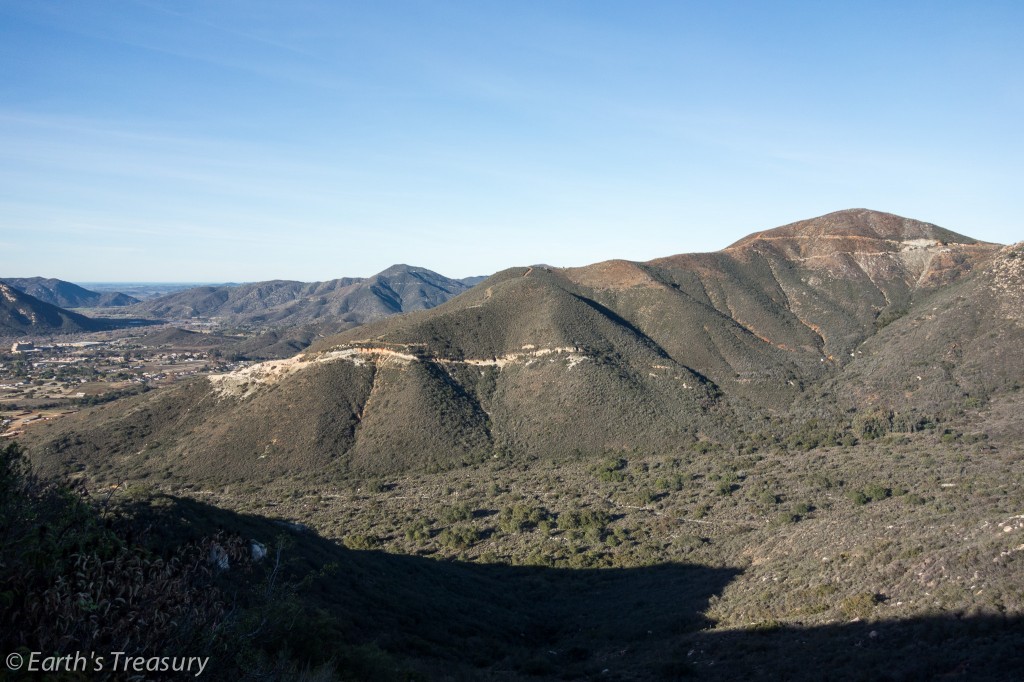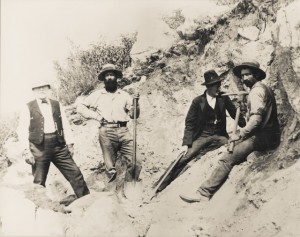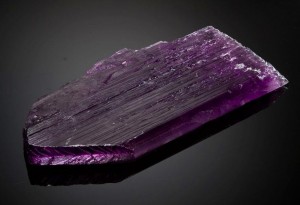Southern California Gem Mining

Introduction
I had the good fortune to spend significant time in this area in the past few years, including a period of time working underground in the Oceanview Mine, currently the only mine where there is active drilling and blasting taking place. The tourmaline mines in San Diego County have produced more tourmaline than any other location in the northern hemisphere, and at one point were the primary source of gem tourmaline in the world. In addition to tourmaline, the mines have also produced beautiful brilliant orange spessartine, pale blue topaz and beautiful pink morganite as well as fine lilac to purple kunzite and pink morganite–both first discovered here in the Pala Mining District.
History
Tourmaline was apparently known for millennia in San Diego County; tourmaline crystals have been found in native American burials.

While tourmaline was first found in California in 1872 on Thomas Mountain in nearbyRiverside County, the most significant commercial deposit was discovered in Mesa Grande in 1898. This became the world-famous Himalaya Mine, still one of the most prolific discoveries of gem tourmaline in the world.
Not long after that, the significant deposits of gems in the Pala Mining District were discovered, about 25 miles west near the town of Pala. Significant mines in this area were the Pala Chief, the Tourmaline Queen and Tourmaline King and the Stewart Mine. All of these mines served a strong demand from China for pink and red tourmaline. At the time, the dowager empress of China, Tz’u Hsi had a love of tourmaline. Not only did she purchase huge quantities of tourmaline, but it also fed demand in the imperial court. Carved tourmaline was extremely popular. It has been estimated that as much as 120 tons of tourmaline was mined and shipped to China from the Himalaya Mine alone in just a few short years–1902-1910. Not long after the dowager empress passed away in 1908, the demand for tourmaline all but disappeared and most of the mines shut down.
In addition to tourmaline, other gemstones were also mined in the area. One of the most important of these was purple-lilac spodumene, first discovered in Pala and called “Kunzite” in honor of Tiffany’s gemologist George Frederick Kunz. Kunzite wasn’t the only gem discovered in the area–substantial amounts of pink to peach-colored beryl were discovered, and Dr. Kunz named that variety “Morganite” in honor of his patron J. P. Morgan. Another important local gemstone was blue topaz; San Diego jeweler John Ware first discovered significant amounts of this gem in the Aguanga area in 1913.
Recent History
By the beginning of the first world war, mining had all but ceased at most localities in San Diego County. No significant mine activity took place until the late 1960’s, when famed Beverly Hills jeweler and gem hunter Ed Swoboda partnered up with Bill Larson to reopen the Stewart and Tourmaline Queen Mines. After several years of work building roads and tunneling, in January 1972 and spectacular pocket of large rubellite tourmalines with deep blue caps was hit, and southern California gems suddenly gained international prominence again. Many of the specimens found in this pocket and several adjacent pockets are in the collections of the greatest museums of the world, and private specimens–when they come available–often sell for six figures or more. This success led to a rebirth of small-scale mining by a variety of local men, including Bob Dawson, Roland Reed, Byron Weege and others. Bill Larson formed Pala International and operated several mines, and oversaw the reopening of the Himalaya Mine, which once again produced significant quantities of spectacular gems. Further south in the county, the Little Three and Hercules Mines produced beautiful topaz and some of the finest spessartine garnets ever found.

The most recent mine to operate in the region is the Oceanview Mine. Work started on this mine on Chief Mountain in Pala around the year 2000, but began in earnest a few years later. After significant tunneling with only minor finds, on September 22, 2007 a significant pocket was discovered. Named the 49’er pocket since it was discovered on mine owner Jeff Swanger’s 49th birthday, this pocket produced a large number of beautiful aquamarine and morganite specimens on albite matrix, as well as large quantities of gem grade citrine. This was followed by the discovery in December 2009 of the first major finds of gem-grade kunzite in California in nearly 100 years. Throughout 2010 and into 2011 several more rich zones were hit, producing a broad variety of tourmaline, morganite and what is believed to be the largest gem kunzite ever found in North America.

